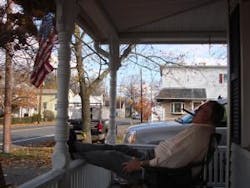Over the past several years, I have seen a certain diminution in the level of fire protection that exists in a number of areas. I have seen this in communities of every size. I have seen this in career, and combination, as well as volunteer departments. Far too many appear to be taking a hit from their political and administrative leaders.
As an observer of the fire service scene, I have chosen to take a close look at the reasons why fire departments appear to take a disproportionate hit at budget time. We must all recognize a number of things:
· Crime pays (at least for police budgets)
· Fire departments are unaware of how big they should be, how many people they should utilize, or how much equipment they need
· The average fire person does not seem to care about the larger picture of protection within their community
· There are those who fail to see the fire service as a multi-service discipline (This amplifies the above statement)
One can only marvel at the amount of money which is available for police departments and that seems to flow in an endless stream from sources that seem almost mythical to a poor old fire service guy like me. It is tough to find a culprit to pin this one on.
I guess each of us must share a bit of the blame, because we have not fought to establish grants programs with the same intensity as our colleagues in the police world. We are working to address that problem in Congress, but there are a host of other places, both public and private, that we need to cultivate.
Hell, why not say what every one is thinking. The federal government is taking our FIRE Act money and siphoning it into that vast reservoir of terrorism money. Terrorism my aunt Hanna, I am sick of hearing about terrorism. Most people I know are responding to car wrecks, heart attacks, and house fires.
However, I suggest that rather than crying foul, we need to refocus how we do business. And now that the Obama Administration has seen fit to steal millions of dollars from our fire-equipment related FIRE Act coffers, the time has come to begin battling for our bucks. The way the current administration is treating the fire service, it won't be long before we are back out on street corners begging for bucks again.
Ah, but enough crying over past tanker loads of spilled milk. If we are to take our place in the world of government affairs, we must begin to operate in a far more organized fashion. Here is where we need to demonstrate that we can operate like a business. We need to work to create fire departments which can demonstrate how they intend to work and how they intend to provide for the public good.
If we are all to be in a position that allows us to develop fire departments truly representative of the communities they protect, we must become intimately familiar with risk analysis and community defense fire plan development. We must adopt a system that allows us to assess the need for fire department, in terms that are readily understandable. We must discover just how many people, pieces of fire apparatus, stations, and the like, are right for our community.
A fire risk assessment of the hazards within any community requires that a determination be made regarding those events that might occur in that community. If a department fails to give this potential emergencies due consideration, their ability to respond to them, should they occur, will be limited. It may also reduce the effectiveness of their overall level of municipal fire protection.
Every fire department should consider adopting a pro-active approach to planning for those potential incidents that may happen in the future. You cannot expect that the future will always be kind to you. You must envision that bad things that could happen and prepare for them.
A great deal of what I exists in each community is there as a result of past practices. More time needs to be spent in planning for future operations. A number of variables exist that can serve as the basis for various potential emergency scenarios. Each must be consciously considered as a part of the planning process. They are as follows:
· Population
· Geography and topography
· Demographics
· Transportation mediums
· Level of industrial development
· Level of residential development
· Level of commercial development
· Predominant construction types
· Available water supply
These are the factors that affect how much fire protection will be needed in your community. Let me assure you that there is a direct relationship between an increase in the number of people who live in you community, and the number of emergency service responses that will occur in your area. I have seen this time and again as new developments have opened here in my fire district.
My area here in Adelphia is no different than any other place in the world. If there are more houses, there exists a greater potential for problems. Even if the percentage of chance in any single home remains the same, there are a lot more places for that chance to occur. It is better to prepare for what may occur than to be cause short.
We have worked to plan for our fire protection. Our fire district now has a second station centrally located to protect areas which are at a distance from our main fire station. In order to arrive at an explanation of why we built where we did, I will present more on the need for strategic planning in an upcoming blog entry.
About the Author

Dr. Harry Carter
HARRY R. CARTER, Ph.D., who is a Firehouse contributing editor, is a fire protection consultant based in Adelphia, NJ. He is chairman of the Board of Commissioners in Howell Township Fire District 2 and retired from the Newark, NJ, Fire Department as a battalion commander. Carter has been a member of the Adelphia Fire Company since 1971, serving as chief in 1991. He is a life member and past president of the International Society of Fire Service Instructors and life member of the NFPA. He is the immediate past president of the U.S. branch of the Institution of Fire Engineers (IFE) of Great Britain. Carter holds a Ph.D. in organization and management from Capella University in Minneapolis, MN.
Connect with Harry:
Email: [email protected]
Sign up for our eNewsletters
Get the latest news and updates
